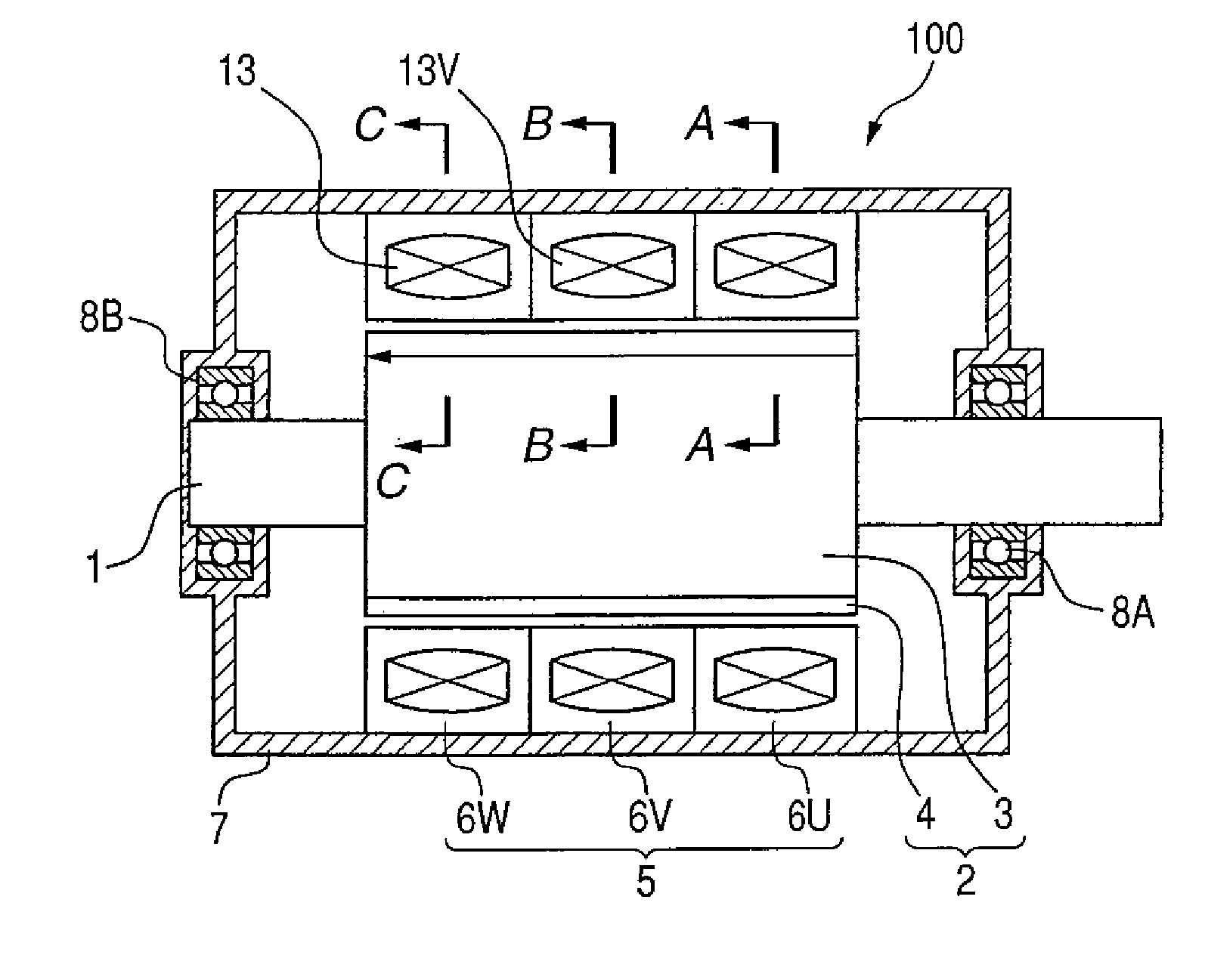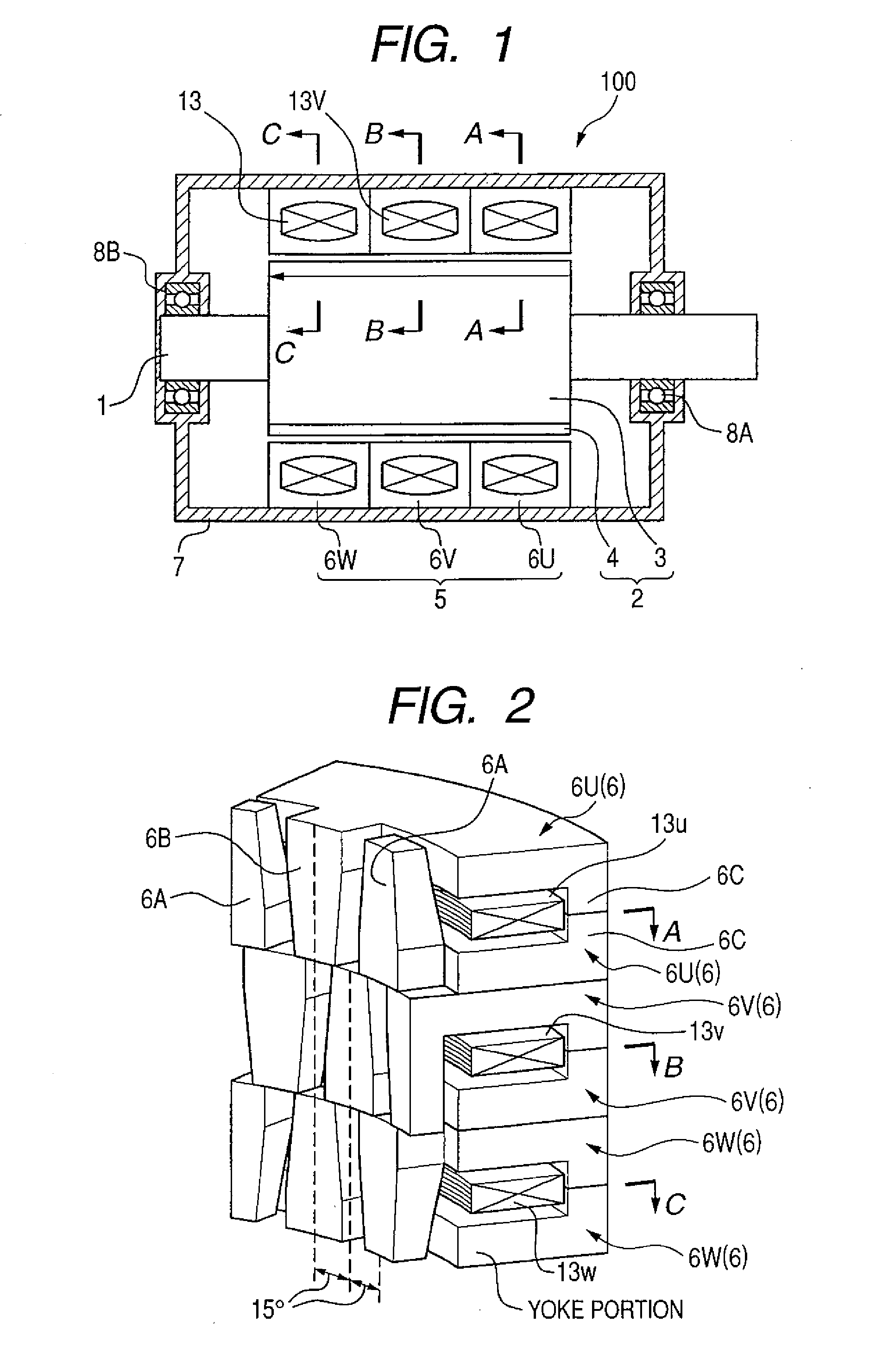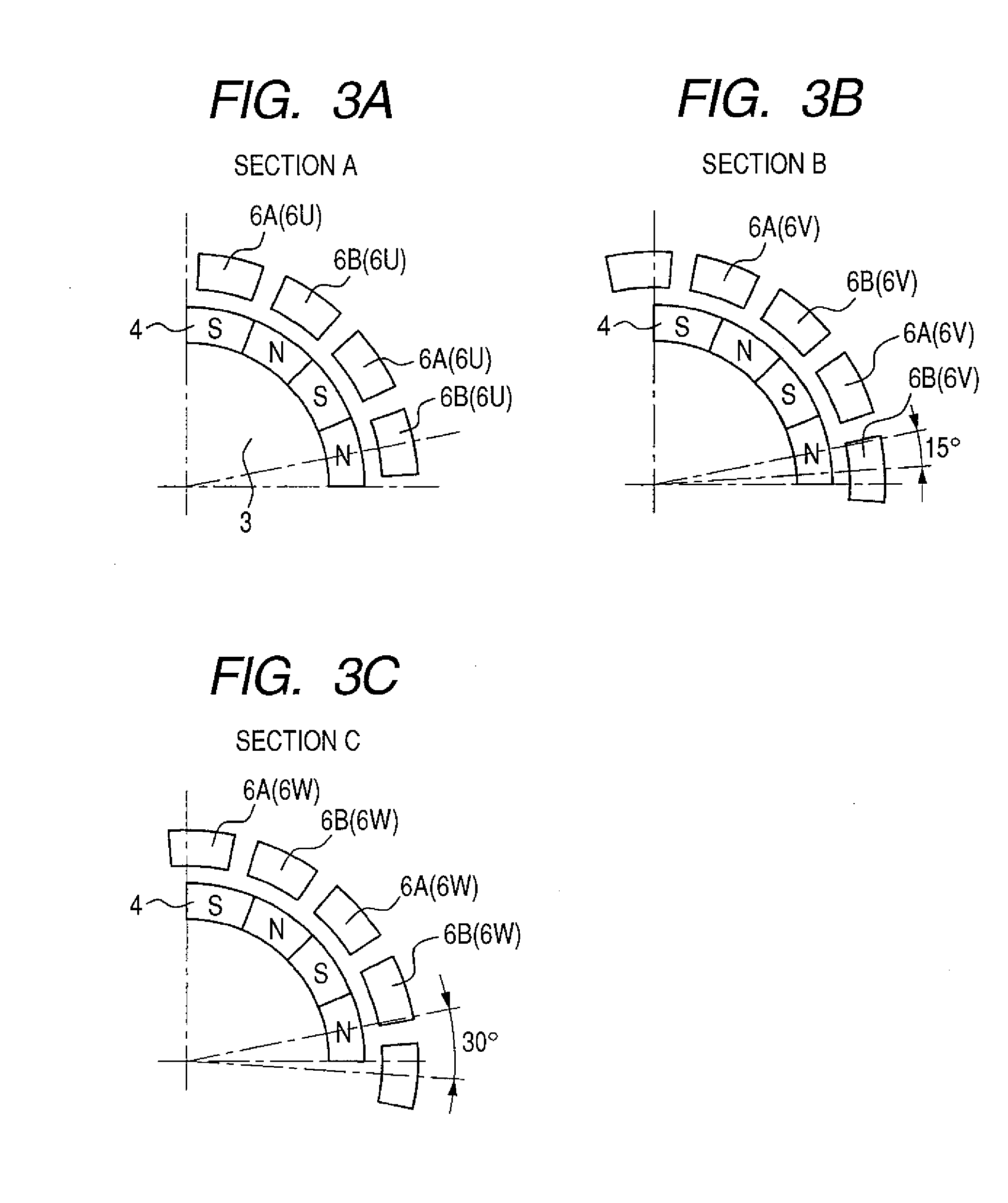Claw Teeth Type Electric Rotary Machine and Manufacturing Method for Stators
a technology of electric rotary machines and manufacturing methods, which is applied in the direction of horology, instruments, and magnetic circuit shapes/forms/construction, etc., can solve the problems of large iron loss in the core of iron loss is produced, and the claw teeth type motor involves problems, so as to enhance the mechanical strength of the stator, avoid compressive deformation, and reduce the effect of core loss
- Summary
- Abstract
- Description
- Claims
- Application Information
AI Technical Summary
Benefits of technology
Problems solved by technology
Method used
Image
Examples
first embodiment
[0038] Description will be given to the structure of a claw teeth type motor (claw teeth type electric rotary machine) in an embodiment of the invention with reference to drawings.
[0039] The claw teeth type motor 100 illustrated in the vertical sectional view in FIG. 1 is a polyphase motor of 16 poles and three phases. It includes: plural annular stators 5 provided in a housing (end bracket) 7; a rotor 2 with a shaft 1 positioned inside the annular stators wherein the shaft 1 is inserted into the rotor 2 in the annular stators; and bearings 8A, 8B which are fixed in the housing 7 and rotatably (revolvably) hold the shaft 1.
[0040] The rotor 2 has so-called ring magnet structure and is formed by magnetizing a ring-shaped ferromagnetic body in 16 poles to obtain a rotor core 3 and inserting (fixing) the shaft 1 into this rotor core by adhesive bonding or the like. The rotor 2 has its both axial ends rotatably supported by the bearings 8A, 8B in the housing 7. The stators 5 are fixed ...
second embodiment
[0049] In the claw teeth type motor 100 in the first embodiment, the three independent stators 5 are disposed in alignment in the axial direction. (Refer to FIG. 1.) Therefore, an imbalance may occurs among phases. More specific description will be given as follows. The stators in two phases (u phase and w phase) positioned at both ends are so structured that one axial ends of their inner surfaces faced to the rotor magnet 4 are positioned close to the ends of the rotor magnet. On the other hand, the stator in the center phase (v phase) is so structured that neither of the axial ends of its inner surface faced to the rotor magnet is positioned close to the ends of the rotor magnet. This structure may break down the balance in terms of magnetic circuit. This imbalance causes unbalanced induced electromotive force to the coils 13. As a result, the efficiency of the motor may be reduced, and further cogging torque due to magnetic imbalance and torque pulsation during load operation may...
third embodiment
[0056] Description will be given to an embodiment in which cogging torque is reduced by providing stator cores 6 with a positioning mechanism to reduce a fabrication error. FIGS. 11B and 11C illustrate cogging torque produced when the position of a 24-pole motor is shifted with a positional error in the direction of rotation. In normal cases, one cycle of electrical angle corresponds to 30 degrees of mechanical angle. When the tolerance for fabrication is set to ±0.5 degrees or so, the amount of shift in electrical angle is ±6 degrees. FIGS. 11A to 11C illustrate an example where one phase is shifted by 0.5 degrees of mechanical angle due to a fabrication error. It will be assumed that the stators are assembled as illustrated in FIG. 11A. That is, the stator in phase A (u phase) is assembled as is shifted from the stator in phase B (v phase) by 10 degrees of mechanical angle. The stator in phase C (w phase), which should be shifted from the stator in phase B by 10 degrees, is assemb...
PUM
| Property | Measurement | Unit |
|---|---|---|
| electrical angle | aaaaa | aaaaa |
| bending strength | aaaaa | aaaaa |
| mechanical angle=electrical angle | aaaaa | aaaaa |
Abstract
Description
Claims
Application Information
 Login to View More
Login to View More - R&D
- Intellectual Property
- Life Sciences
- Materials
- Tech Scout
- Unparalleled Data Quality
- Higher Quality Content
- 60% Fewer Hallucinations
Browse by: Latest US Patents, China's latest patents, Technical Efficacy Thesaurus, Application Domain, Technology Topic, Popular Technical Reports.
© 2025 PatSnap. All rights reserved.Legal|Privacy policy|Modern Slavery Act Transparency Statement|Sitemap|About US| Contact US: help@patsnap.com



